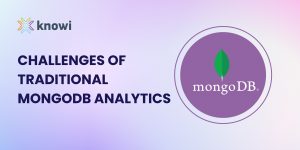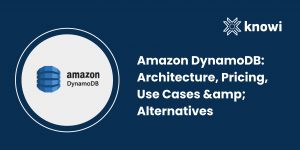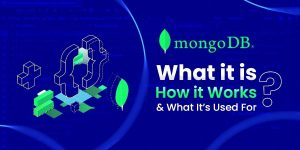TL;DR (Summary)
- Kibana is an open-source data visualization tool built to work with Elasticsearch, enabling users to explore, visualize, and monitor their data in real time.
- It’s part of the ELK Stack (Elasticsearch, Logstash, Kibana), a popular suite for log analysis and monitoring.
- Kibana supports dashboards, visualizations (charts, maps), time-series analysis (Timelion), machine learning, canvas views, and application monitoring (APM).
- You can interact with data via Elasticsearch queries, use Dev Tools for debugging and API testing, and export dashboards as reports.
- While Kibana is powerful, it lacks native integration with relational and NoSQL databases, and plugin/version compatibility can be tricky.
- Knowi offers a more flexible alternative with native Elasticsearch integration plus support for NoSQL, SQL, and REST APIs, making it easier to blend and visualize data across sources without ETL.
Table of Contents
- Introduction
- What is Kibana?
- How the ELK Stack Works
- Kibana Features
- Pros and Cons
- At Knowi
- Conclusion
- Frequently Asked Questions
Introduction
It’s often claimed that data has overtaken oil as the world’s most valuable resource. Whether or not this is true, it’s important to note that, just like oil, data is useless until it’s mined and handled (i.e., analyzed) correctly. At Knowi, and, I suppose, everyone in the Data Analytics space agrees and values data the most. The next question is analyzing vast amounts of data from businesses and organizations. Enter Visualization tools.
Visualization tools make use of Data analytics to visualize data. Data analytics converts raw data into actionable insights. It includes various tools, technologies, and processes to find trends and solve problems using data. Data analytics can shape business processes, improve decision-making, and foster growth.
Visualization tools make use of Data analytics to visualize data. Data analytics converts raw data into actionable insights. It includes various tools, technologies, and processes to find trends and solve problems using data. Unlike traditional BI tools like Power BI or Tableau, or specialized database tools like MongoDB Charts, Kibana is specifically designed for Elasticsearch analytics.
What is Kibana?
Kibana is an open-source data visualization and exploration tool designed to work seamlessly with Elasticsearch, a distributed search and analytics engine. Developed by Elastic, Kibana provides a user-friendly interface to interact with Elasticsearch and transform raw data into visually appealing and informative dashboards, charts, and reports.
Kibana is part of the ELK (Elasticsearch, Logstash, and Kibana) stack. ELK stack is a complete solution for collecting, processing, and visualizing data. Logstash extracts the logging data or other events from different input sources in the ELK stack. It processes and stores the events in Elasticsearch, a search-based data solution. Kibana is the visualization tool that accesses the logs from Elasticsearch and displays them to the user through line graphs, bar graphs, pie charts, etc.
For alternatives to the ELK stack, see our guide on the open-source fork of Elasticsearch.
Here is how the ELK stack works:

This integrated approach differs from platforms that work with multiple data sources like Snowflake for data warehousing or Cassandra for distributed databases. For teams needing to combine data from APIs or join across multiple databases, additional tools are required.
Kibana Features
Kibana enables you to shape your raw data and transform it into meaningful insights. Some of the key features include:
- Real-time Data Exploration: Kibana allows users to explore and interact with their data in real-time. With its intuitive search and filter capabilities, users can drill down into specific datasets and gain instant insights.
- Visualizations: Kibana supports various visualization options, including line charts, bar charts, pie charts, and maps. Users can create customized visualizations to represent their data most meaningfully.
- Dashboards: Users can combine multiple visualizations into interactive dashboards, providing a comprehensive view of their data. Dashboards are highly customizable, allowing users to arrange and resize visualizations to suit their needs.
- Elasticsearch Query Integration: Kibana seamlessly integrates with Elasticsearch queries, enabling users to retrieve and analyze data using Elasticsearch’s powerful search capabilities.
- Machine Learning Integration: Kibana incorporates machine learning features to detect anomalies, forecast trends, and gain deeper insights into data patterns, enhancing predictive analytics capabilities. Kibana uses machine learning features such as anomaly and outlier detection, making it easier to notice suspicious activities with minimal human interference.
- Timelion: Timelion is a time-series data visualization feature in Kibana that enables users to create composite charts, making it easier to analyze trends and patterns over time.
- Dev Tools: The dev tools contain tools that let you interact with data. Tools such as:
- Console – Interact with the REST APIs of Elasticsearch and Kibana, including sending requests and viewing API documentation.
- Search Profiler – Inspect and analyze your search queries.
- Grok debugger – Build and debug grok patterns.
- Painless lab – Test and debug scripts in real-time.
- Report: All the data in the visualization and dashboard can be converted to reports (CSV format), embedded in the code, or in the form of URLs to be shared with others.
- Plugins: Kibana provides several plugins for apps, Timelion, and visualizations. Check their documentation for more details.
- Maps: You can create unique maps with Kibana from your geographical data. With Kibana Maps, you can:
- Build maps with multiple layers and indices.
- Animate spatial-temporal data.
- Upload GeoJSON files and shapefiles for analysis.
- Embed your map in dashboards to generate visualizations.
- Symbolize features using data valu
- Canvas: Canvas is yet another powerful feature in Kibana. Using canvas visualization, you can represent your data in different color combinations, shapes, texts, and multiple pages called a workpad.
- APM: The APM app in Kibana is an application monitoring feature that allows you to monitor your software services and applications in real time, visualize detailed performance information on your services, identify and analyze errors, and monitor host-level and APM agent-specific metrics like JVM and Go runtime metrics.
- REST API: Some Kibana features are provided via a REST API, ideal for creating an integration with Kibana or automating certain aspects of configuring and deploying Kibana.
Pros and Cons
Kibana comes with a lot of advantages:
- The ELK advantage: It contains a browser-based visualization tool mainly used to analyze large volumes of logs in line graphs, bar graphs, pie charts, heat maps, etc. It easily integrates with Elasticsearch, Beats, and Logstash.
- Not a steep learning curve: Simple and easy for beginners to understand.
- Ease of conversion of visualization and dashboard into reports.
- Canvas visualization helps to analyze complex data efficiently.
- Timelion visualization in Kibana helps to compare data backward to understand the performance better.
Disadvantages:
- Adding plugins to Kibana can be tedious if a version mismatch exists.
- You face issues when you want to upgrade from an older version to a new one.
- Kibana provides no native integration with relational databases or NoSQL.
- Changes in Elastic’s open-source license terms have left many users on two roads.
Read a detailed comparison of Kibana vs. Knowi here: Kibana alternative Knowi.
At Knowi
Knowi has firmly established itself as an elastic search analytics and data visualization leader. It integrates with elastic search and allows you the flexibility to integrate natively with NoSQL databases or RDBMS and NLP queries.
As the business landscape continues evolving, so does Knowi, ensuring our offerings remain cutting-edge and relevant. If you want to elevate your data-driven decision-making, there’s no better time to explore what Knowi offers. Ready to experience the power of Knowi firsthand? Book a demo today and embark on a transformative analytics journey.
Conclusion
Kibana stands as a versatile and powerful tool in the world of data visualization. Its seamless integration with Elasticsearch, extensive range of features, and user-friendly interface make it a top choice for businesses seeking to derive actionable insights from their data. Whether used for log analysis, business intelligence, or security monitoring, Kibana empowers users to transform raw data into meaningful visualizations, unlocking the full potential of their data analytics journey.
Frequently Asked Questions (FAQs)
What is Kibana used for?
Kibana is used for visualizing and exploring data stored in Elasticsearch, especially for log analysis, security monitoring, and real-time business insights.
How does Kibana fit into the ELK stack?
Kibana is the visualization layer of the ELK stack. Logstash collects and processes data, Elasticsearch stores it, and Kibana presents it in dashboards and visualizations.
What kind of visualizations does Kibana support?
Kibana supports bar charts, line charts, pie charts, heatmaps, maps, time-series graphs (Timelion), and Canvas dashboards for custom visual storytelling.
Can I use SQL or other query languages in Kibana?
Not directly. Kibana relies on Elasticsearch’s native query DSL, but users interact through Kibana’s GUI, filters, and Dev Tools for advanced queries.
Does Kibana support machine learning?
Yes. Kibana includes anomaly detection and forecasting tools, which help identify outliers and patterns without deep ML expertise.
What are some key features of Kibana?
- Real-time data exploration
- Custom dashboards
- Timelion for time-series data
- Canvas for rich visual storytelling
- Dev Tools for querying and debugging
- Maps and APM for geospatial and application monitoring
- Reporting & REST API support
What are the pros and cons of using Kibana?
Pros:
- Tight integration with Elasticsearch
- User-friendly dashboard and chart builder
- Machine learning, maps, and canvas features
- Strong for log analytics and monitoring
Cons:
- No native SQL/NoSQL integration
- Plugin/version mismatches can cause issues
- Upgrade paths can be complex
- Licensing changes from Elastic may limit flexibility
Is Kibana suitable for business intelligence use cases?
Yes—for organizations already using Elasticsearch. However, for cross-database analytics or more flexible BI features, tools like Knowi are better suited.
Can I export Kibana dashboards or reports?
Yes. Kibana allows CSV exports, embedded links, and report generation from visualizations and dashboards.
What’s a good alternative to Kibana for native Elasticsearch analytics plus SQL/NoSQL support?
Knowi is a powerful Kibana alternative that natively integrates with Elasticsearch and other databases, supports natural language queries, and provides a unified interface for AI-powered analytics without ETL.
Learn More About Data Analytics
Elasticsearch resources
- Complete Elasticsearch Guide
- Elasticsearch Analytics Tutorial
- Query Templates for Elasticsearch
- Best Elasticsearch Analytics Tools





